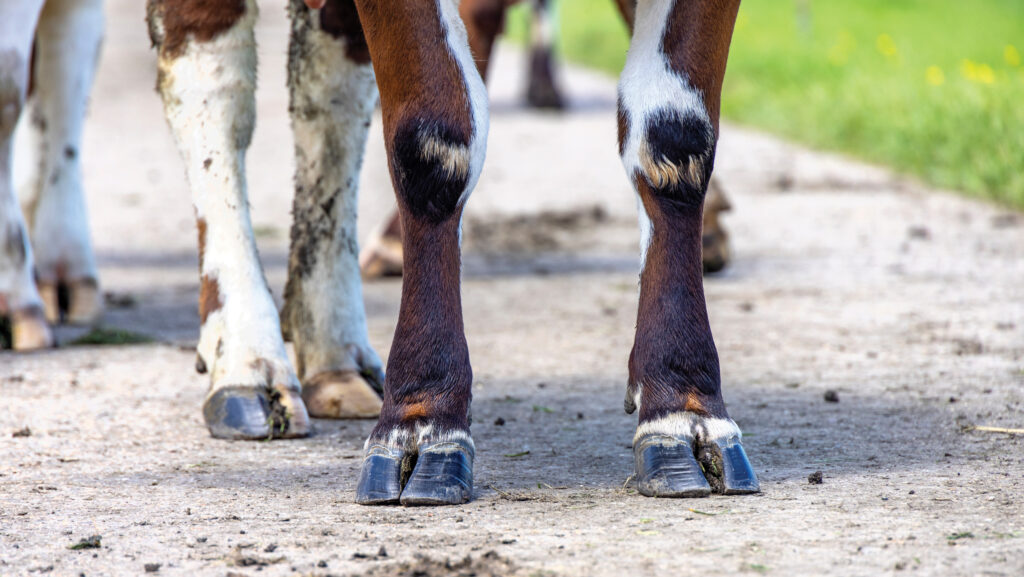Dairy mobility survey lays out lameness recommendations
 Black hooves of a cow standing of a dairy cow standing on a path, red and white fur
Black hooves of a cow standing of a dairy cow standing on a path, red and white fur Combining mobility scoring cameras with specialised staff roles could help tackle the lack of progress in dairy cow foot health.
This is revealed in the survey results of attitudes to lameness, carried out by Stride, an initiative set up to improve dairy cow mobility in the UK.
Vet and chairman of the Stride technical board, Matt Dobbs, said the results confirmed an attitude of acceptance about lameness on farm.
See also: How to tackle chronic dairy cow lameness and mobility
While substantial progress has been made in tackling mastitis, he said there is a degree of resignation among dairy farmers about poor mobility and lameness.
This is despite the incidence rate remaining at 30% and each lameness case costing £330 a cow, according to the AHDB.
Using financial incentives in the milk cheque to change behaviour could simply result in under-reporting of lameness cases, said Matt. This is why Stride thinks the whole industry needs to work together.
Advisers and professionals have a responsibility to take the initiative to help farms improve mobility and cow health.
“Compromised foot health and reduced mobility have stubbornly remained a cause of reduced productivity, increased costs and higher rates of involuntary culling in dairy herds,” he said.
“It’s a challenging, multifactorial disease to get on top of, yet some farmers can get lameness rates in single figures, while others are at 60%.”
Investment
As the survey revealed that 90% of farms now have a foot-bath, and 92% a foot-trimming crush, Matt said further spend on infrastructure is necessary, but needs critical appraisal.
“Farmers need to make medium- and long-term investment.
“Everyone has done the easy bits – the crush and foot-bath – the difficult thing is investing for the next three to five years, as it won’t get an instant return,” he explained.
Matt said that it was important to choose the right technology (such as automated mobility scoring) and future-proof it.
“But it is important to work out which technology to buy, so that the return on investment can be realised. Benchmarking herd performance will confirm this,” he added.
Some 70% of survey respondents use a foot-trimmer, and 37% have a mobility scorer, reflecting a “growing team approach” to farm mobility, particularly in larger herds.
However, a key finding was the lack of clarity on farms about who was responsible for foot health.
The solution from Stride is to have one person in the team who has the appropriate support and training to lead a foot-care programme.
Stride UK dairy mobility initiative
- Not-for-profit initiative managed by a group of industry partners representing key areas in foot health: Neogen, Herdvision, Zinpro, Farm Vets and Ceva
- Survey of 359 businesses: average herd size 330 cows and yield of 8,660 litres
- 67% of respondents calving year-round
- 17% autumn block-calving, 6% spring block-calving and 7% split block-calving
- 61% of herds had cows grazing for 13 to 36 weeks a year
- 84% of herds milking through parlours
- 77% of survey respondents believed poor mobility had no, or limited, impact on herd profitability
- Digital dermatitis and sole ulcers/bruising main causes of lameness
- 60% of farms only foot-trim “when necessary”
- 78% of respondents foot-bath milking cows weekly
- 28% foot-bath dry cows weekly
- 60% say lameness is one of their top three reasons for culling
Full survey results, plus a programme of on-farm events, can be found on the Stride website.
